Andrew Collins's Blog, page 6
December 30, 2015
2015: out with “new”

To paraphrase the Electric Light Orchestra, the big wheel keeps on turning. But before 2015 winds down and 2016 rattles into view, I thought I’d reflect on the old year with a stock-take of new experiences I have notched up since January 1. This may not be a long list, as life tends to solidify into routine when you pass 40 unless it doesn’t, and fresh experiences are rarer. This also makes them more cherishable.

For the record, these are my cultural roundups of the year, now patted into shape after a few last-minute additions, the incorrigible bean-counter that I am.
The year in film
The year in TV
The year in books
The year in music
I didn’t do the year in theatre or gigs as I didn’t step foot inside a theatre in 2015, and only attended one live show, albeit a splendid one, and a new experience, so let’s start there.

Classic FM Live | I have been to a classical concert before – the then-controller of Radio 2 invited me to a Prom when I was at 6 Music – and I’ve been to the Royal Albert Hall countless times, albeit usually to see rock or pop in the line of duty (Elton John, Echo & The Bunnymen, the Manics), and once, a ballet. This was my first Classic FM concert, and my first time seeing the Royal Liverpool Philharmonic Orchestra under the direction of their Principal Conductor Vasily Petrenko. It was their 175th anniversary year and a very special night – also, my initiation into the rites of Classic FM, my new employer, who provided a box, and sat me with a selection of Lords (who were the first peers I have ever met). I loved seeing the young pianist Ji Liu doing Rachmaninov’s Piano Concerto No.2, and it was fun to see James Galway playing a selection of favourites, as I had actually heard of him! I would say that the explosive rendition of Tchaikovsky’s 1812 Overture by the RLPO was a musical highlight of 2015. (I also saw my pal Justin Moorhouse live; he was on terrific form in Edinburgh – arguably his best – but this is not the first time I have seen him so does not count as a “new” experience. If I hadn’t been working in Edinburgh, I might have seen a few more shows and chosen them less conservatively.)

Saturday Night At The Movies | One thing I didn’t foresee when this year began was a new job on the near horizon. Since my tenure at 6 Music ran out in 2012, I’ve relied on the occasional Front Row nod to keep my voice on the radio, but the wireless took a back seat. When the eminent Howard Goodall announced that he would no longer be able to present Classic FM’s weekly film programme Saturday Night at the Movies (due to having a West End musical to write and oversee), I didn’t expect to be asked to audition for the gig. I leaped at the chance. And, after a couple of tryouts in late 2014, I found myself royally announced in February as a new, contracted Classic FM presenter. My first show was on March 7, and I’ve been on pretty much every Saturday thereafter, a new experience all round. I’ve been on commercial radio stations as a guest (I’ve even reviewed the papers on Nick Ferrari’s LBC breakfast show, which is in the same building as Classic, and is owned by the same media company, Global), but I’ve never presented on one, and it’s a whole new ballgame, and I feel incredibly proud to slot in between the august likes of John Suchet, Alexander Armstrong and Charlotte Green. My appreciation of classical music, and movie music, has been vastly expanded and refined over the year and the experience has given so much back. I’ve also loved discovering videogame music (which we also cover), and becoming an evangelist for it, and communicating with the listeners and movie music fans via social media. One new thing I’ve discovered is how appreciative composers are when you play their music on the radio – as, frankly, movie music doesn’t get much of a look in. I genuinely feel as if I am offering a public service.
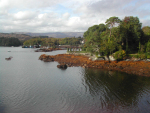
County Cork | I’ve been to Cork before, but it’s not a county I know as well as I know Galway, or Kerry, and this year’s holiday in Glengarriff was a highlight of 2015, and packed with the new! First time in Glengarriff itself, a tidy harbour town, and first time to neighbouring Bantry, a metropolis by comparison, and a surefire spot for picking up the Guardian of a morning. We also visited Garinish Island by boat, saw seals in repose and dolphins at play along the way, and drove through the pretty Bandon, where Graham Norton was raised (and which has named a river walk after its most famous son). The waterwheel in the large photo above is in Bantry.
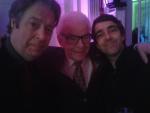
Nice people | My job, when writing, can be solitary. However, over the last few years, hosting has grown into a more significant string to my professional bow. My fourth consecutive year at the Edinburgh TV Festival, hosting Q&As and screenings both public and industry-only, was another blast, but something of a regular event for me. What’s always new about the job is the sparkling parade of people I get to meet and talk to in the name of work. I’ve upped my work-rate for UKTV this year with events for channels Watch and Dave that have been among my favourites. And among those new people I’ve met and green-roomed with have been: Ron Perlman and the cast of Hand Of God; the band Glasvegas (unexpected stars of the reality show Singing In The Rainforest); Monica Galetti of Masterchef: The Professionals; Roger Allam (pictured, with Barry Cryer, as voluble as ever, at January’s Radio Times Covers Party); Myleene Klass (also a colleague now); Charlie Simpson of Busted; Peter Kosminsky, who I interviewed as part of a BBC staff morale-boosting day in Salford, where I met DG Tony Hall for the first time too, too; the entire dramatis personae of Gogglebox as it stood after series 5 (minus Steph and Dom, who were busy), with special mention for the lovable and witty Giles and Mary, with whom I caroused at the Radio Times Festival before interviewing them in a freezing cold tent in front of an audience who doggedly refused to throw in the towel and seek warmth elsewhere; it was, naturally, a boyhood dream come true when I interviewed Harrison Ford in the flesh for Classic FM, in December – a hell of a way to end my Zelig year.
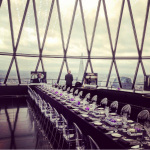
Such thing as a free lunch | Sky Atlantic invited me, along with other gentlefolk of the press, to dinner at the top of the Gherkin in the City of London (a building that now stands as a paragon of architectural modesty in the gruesome shadows of the Shard and the Walkie Talkie), which was another first for 2015. I also discovered for the first time that the SD memory card in my knackered old phone sometimes erases all your photos for a laugh, never to be recovered. This pic was taken by Charlie Jordan. It was a fabulous evening, with a top view, and we were there to watch exclusive clips from The Last Panthers, which turned out to be one of the TV dramas of the year, luckily. UKTV also kindly invited me to a noisy Christmas press lunch at Mossiman’s, the “private dining club”, my first time there as well, although fine dining is not all it’s cracked up to be and there’s no point putting on airs and graces if you have tacky, framed pictures on the wall of all the celebrities who’ve privately dined there!

That’s it for the new. It’s already old, so let’s throw it out with the neither new nor old. I’ve totted it up and I saw 140 films in 2015 that I hadn’t seen before, of which 97 were released in 2015. Nothing to trouble Mark Kermode but I pay to the go to the cinema and he doesn’t have to. And in any case, that’s quite a bit of new. I’ve also started to try and pronounce the word “new” properly, having noticed that it still comes out as the flat Northamptonian “noo” on the radio, when I prefer to to hear it exit my lips to rhyme with “phew”. Just goes to show that, even at 50, you’re not finished yet, and there’s more to do, things to improve and refine. I’ve blogged only intermittently this year, but not through want of things that enrage and engage me. May things do both once again in the new year. I am definitely getting more left wing as I get older, which I wholeheartedly welcome.


December 22, 2015
2015: the year in music
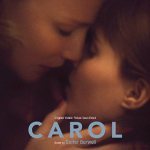
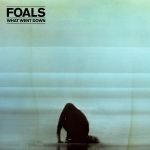
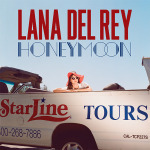
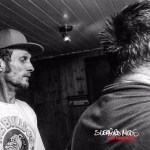


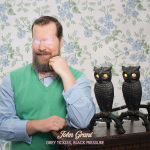
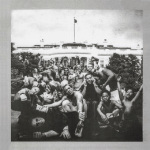

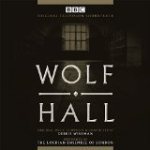


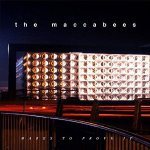
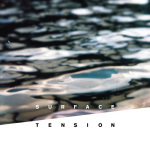

Well, I surprise myself. (And at my age, that’s a surprise in itself.) I have a solid 15 albums, all released this year, worthy of compiling into an end-of-year list. I will put them in qualitative order, despite the iniquity of doing so – I purchased three of these albums in the last couple of days, keen to catch up, so while the majority have had a really meaningful run around my head in the car (we drove from London to Cork in October, there and back, and many points inbetween, with a battery of CDs to guide us), on foot and on public transport, Adele, Kendrick Lamar and John Grant have some catching up to do. What the hell. Here goes.
1. Sleaford Mods Key Markets Harbinger
2. Adele 25 XL
3. Young Fathers Black Men Are White Men Too Big Dada
4. Carter Burwell Carol Varese Sarabande
5. Foals What Went Down Transgressive
6. Jamie xx In Colour Young Turks
7. Debbie Wiseman Wolf Hall Silva Screen
8. John Grant Grey Tickles, Black Pressure Bella Union
9. The Maccabees Marks To Prove It Fiction
10. Kendrick Lamar To Pimp A Butterfly Interscope
11. Pete Williams Roughnecks + Roustabouts Basehart
12. Rob St. John Surface Tension Rob St. John
13. Hot Chip Why Make Sense? Domino
14. Lana Del Rey Honeymoon Interscope
15. Blur The Magic Whip Parlophone
Sleaford Mods have been my lifesaver this year. I am at an age where I don’t expect to have my head turned by new artists (or newer artists, if you got there before me, and I rather expect you did). But this pair of East Midlands fortysomethings with their bendy vowels sounded as good as they read on paper. Good to get in at the ground floor with their eighth album – and I promise to dig backwards forthwith – but I’ve found it difficult not to play Key Markets through my ears. The only problem with it is that it demands your full attention. It’s not background music. So I’m reading less on public transport. And hearing the word “coont” a lot more.
I don’t discover music or artistes any more. How could I? I come to them at my own speed, and pay for the pleasure. I am no longer someone record companies or pluggers send records to. Why would they? (Actually, the quality indie reissues house 3Loop do, and I appreciate their loyalty.) This means I have entered a state of grace. I am a 6 Music listener, a Guardian music section reader and viewer of the BBC’s scant musical output (Later … With Jools Holland, Glastonbury, essentially) and these three institutions continue to direct me to a physical record shop on a physical high street. Not every month. Often in mini-binges, to catch up (and the prospect of a driving holiday in Ireland caused a phenomenal influx in late September).

The big change in listening in 2015 has been Classic FM, who took me on in March. On a weekly basis this year I’ve been helping to curate a two-hour show of orchestral movie music and it’s been an education, as well as an excuse to play scores I already love. I’ve included two new, full scores in my Top 15, Carol and Wolf Hall, as I’ve listened to both as albums and returned to them again and again. The bulk of my iPod year has been taken up with classical music, and my savage breast is all the calmer for it.
And a final note about Kendrick Lamar. It was 6 Music and Alexis Petridis who between them led me to this artist and what turns out to be his third LP, and his second million-seller. Who knew? I bought the album – the “album of the year” for many critics – having only heard two tracks, and while slightly disappointed by the amount of “motherfuckers” on it, it’s clearly a work of uncommon invention and pluralism, and is a friend of jazz. I’ll need to try harder to get into it, as I really don’t like the interludes, but there’s something going on here, I’m just late to the party. As always.
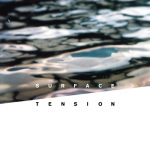
Oh, and a nice little link between two very disparate LPs: Rob St John’s delightfully immersive multimedia experience Surface Tension is based on recordings taken along the River Lea in London (it’s an elementally London record); Adele’s 25, which may have sold one or two more copies than Rob’s but they’re not really competing for the same audience, contains a lovely, gospelly song called River Lea. You have to look for connections, but they are always there. Buy both.


December 21, 2015
2015: the year in TV

It’s been a momentous year for television. Mainly in the sense that I entered the world of a TV show that I love, Gogglebox, which proceeded to take over my life. When I say it’s a show I love, that love has not been reduced or tainted by the privileged position of having met, interacted and forged modest bonds with its participants. Do you get me?
Although I have met, interviewed, interacted with on Twitter and worked in real life wife a large number of actors, writers, directors and other key crew on TV shows, and toil silently in the backroom on scripts for most of the time (most of it, this year, in the basement of development), my most important relationship with television takes place in my living room, or at my computer. And that’s fine with me. For the time being.
There is always a danger when you meet your heroes that they turn out to have feet of clay. As a viewer, I always regarded the Gogglebox families and couples not as heroes, or gods, or celestial beings, but something even stranger: as close friends. Being invited across their threshholds during April and May this year to meet their pets, drink their coffee, eat their biscuits and use their facilities was a cosmic experience unlike any other in my quarter-century in the media; not only does Gogglebox infer intimate knowledge on the besotted viewer (and there are more of us now than ever before), it makes you feel as if you know your way around the houses, even though you don’t, as you only ever view them through one permanently fixed frame. Thanks to the book publisher Macmillan, I was able to go through the looking glass. It has been a rare treat, one not to be repeated. I’m proud of the book. I hope it raises some smiles this Christmas.

Back in front of my own TV, on the appropriate side of the glass, I watched loads of great telly. I shall list my Top 22 in no particular order, although you may have heard me say already that season two of HBO’s The Leftovers was my favourite show of 2015, just as season one of this beguiling, heartbreaking drama about loss and grief was my favourite show of 2014. The news that HBO have ordered up a third (albeit final) season made my year.
The Leftovers, HBO (thus Sky Atlantic)
Detectorists, BBC Four
First Dates, Chanel 4
The Last Kingdom, BBC Two
Fargo, Fox
Catastrophe, Channel 4
Gogglebox, Channel 4
Wolf Hall, BBC Two
This Is England 90, Channel 4
Unforgotten, ITV
Cradle To Grave, BBC Two
The Walking Dead, Fox
1864, BBC Four
The Game, BBC Two
Ripper Street, Amazon/BBC One
Masterchef: The Professionals, BBC Two
Last Week Tonight with John Oliver, HBO
The Last Panthers, Sky Atlantic
Game Of Thrones, HBO
The Frankenstein Chronicles, ITV Encore
Sound Of Song, BBC Four
Modern Life Is Goodish, Dave

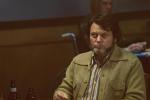
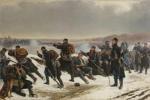
Having sifted 22 to the top. Let’s doff the cap to another batch, all of which have entertained or informed me, in some cases both, and gripped me to the last episode (or in the case of the single drama The Go-Between, gripped me to the end of the only episode). In another year of countless first episodes dutifully watched and second episodes left untouched (From Darkness, River, season two of The Returned, Witnesses, Cuffs), sometimes through sheer bulk of telly to get through but mostly due to failure of engagement, I really appreciated those shows that pulled me back in and had me ’till goodbye.
Poldark, BBC one
Toast Of London, Channel 4
The Hunt, BBC One
True Detective, HBO
Broadchurch 2, ITV
The Go-Between, BBC One
The Saboteurs, More4
The Good Wife, More4
Penny Dreadful, Sky Atlantic
Lewis, ITV
Mad Men, Sky Atlantic
The Daily Show (prior to Jon Stewart leaving), Comedy Central
W1A, BBC Two
Veep, Sky Atlantic
Looking, Sky Atlantic
The Man In The High Castle, Amazon
Togetherness, Sky Atlantic
Show Me A Hero, Sky Atlantic
Silicon Valley, Sky Atlantic
The Great British Bake Off, BBC One
Dawn Chorus, BBC Four
Bitter Lake, BBC iPlayer
Fear Itself, BBC iPlayer
I must pay tribute to North One TV, the production company which keeps asking me to be a talking head on shows like The Best Of Bad TV on Channel 5, and – one for the New Year – The Greatest Animated Movies. I really enjoy doing these, as it’s basically talking about telly and films, which I’d be doing anyway! I’m not on the screen that much any more, except for the little one on the Guardian website, so it’s a pleasure to be asked.
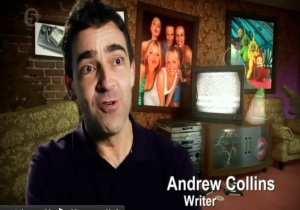
It curdles my insides to say it, but I think this is the first year for some time where my name didn’t appear in the credits for something on TV (or at the cinema, like last year, hem hem), unless you count the reruns of Not Going Out on Dave, which are on a loop. Oh, it goes without saying that I am still co-developing a TV drama, the one I was co-developing this time last year, but as anybody who’s been in development will concur, it’s better to still be developing it than no longer developing it. It’s not dead until pronounced so by the broadcaster. Here’s to another year of it. All of it.


2015: the year in film









Once again, I’ve tried to see as many films as humanly possible, in order to be able to take a fair-minded assessment of the year. But a glance at the Sight & Sound end-of-year lists – which blatantly reflect the year’s international festival programmes, with not a care for the straitjacket of UK theatrical release (their number one film, The Assassin, is not out here until the New Year) – instantly renders mine parochial. That said, if foreign-language pictures do not dominate my Top 10 or Top 35, they enhance and enrich both. One of my jobs is to keep up with new releases so that when the films arrive on television, I can have an opinion on them in Radio Times. But I don’t have the pressure of a national newspaper critic, or blogger, who seeks to keep up with the big new films in the week of release. I saw most of the less mainstream titles on steam-powered DVD, or via Curzon Home Cinema, which continues to be a lifeline.
Here is my sneaky Top 10 (which underlines why a Star Wars film can’t realistically be measured against a Roy Andersson):
1. 45 Years| Andrew Haigh | UK
2. Carol| Todd Haynes | US
3. Star Wars: The Force Awakens| JJ Abrams | US
4. A Pigeon Sat On A Branch Reflecting On Existence| Roy Andersson | Sweden/Norway/France/Germany
5. Brooklyn | John Crowley | UK/Ireland/Canada
6. The Falling| Carol Morley | UK
7. Black Souls| Francesco Munzi | Italy/France
8. The Ecstasy Of Wilko Johnson| Julien Temple | UK
9. Force Majeure | Ruben Östlund | Sweden/France/Norway
10= Amy| Asif Kapadia | UK
10= Timbuktu | Abderrahmane Sissako | France/Mauritania
I like the way half of the Top 10 (alright, Top 11, but I couldn’t prise Amy and Timbuktu apart) turn out to be UK productions or co-productions. This tells us something good about our national cinema, which can just as easily be scenes from a marriage or an impressionistically elemental work of art. As for the two UK documentaries, interestingly both are about musicians, one who dies, the other who cheats death. Of the three US films, one is the biggest film of the year, and possibly of all time, financially speaking, so deal with that. (It’s the same as putting an Adele album in my Top 10 LPs, which I will be doing again this year. I’m used to it.) Roy Andersson’s A Pigeon Sat On A Branch is so different from the pack it may as well have its own chart. I watched it – far from ideally – in two hotel rooms, one in Liverpool, the second in Durham. It transfixed me, even so. (In fact, maybe because of the circumstances.)

I won’t order the remaining 25 films. It goes without saying that all did more than just divert me, or fill the time, or meet a professional quota.
A Most Violent Year | JC Chandor | US
Whiplash | Damien Chazelle | US
White God | Kornél Mundruczó | Hungary
Fidelio: Alice’s Journey | Lucie Borleteau | France
Selma | Ava DuVernay | US
Inherent Vice | Paul Thomas Anderson | US
Birdman | Alejandro G. Iñárritu | US
Foxcatcher | Bennett Miller | US
Still Alice | Richard Glatzer, Wash Westmoreland | US
Altman | Ron Mann | Canada
San Andreas | Brad Peyton | US
Wild Tales | Damián Szifron | Argentina/Spain
When You’re Young | Noah Baumbach | US
Love and Mercy | Bill Pohlad | US
Clouds Of Sils Maria | Olivier Assayas | France/Germany/Switzerland
The Salt Of The Earth | Wim Wenders, Juliano Ribeiro Salgado | France/Brazil
Far From The Madding Crowd | Thomas Vinterberg | UK
Everest | Baltasar Kormákur | UK/US
The Martian | Ridley Scott | US
Ex Machina | Alex Garland | UK
Trainwreck | Judd Apatow | US
Steve Jobs | Danny Boyle | UK
Red Army | Gabe Polsky | US/Russia
Mia Madre | Nanni Moretti | Italy/France
The Wolfpack | Crystal Moselle | US
Straight Outta Compton | F Gary Gray | US
Please do share your own. Nobody’s opinion counts for more than anybody else’s. (Oh, and by the way, of course I included San Andreas, which is probably only a three-star film, but this is my list, it is the list that is mine, and what it is, too.)


December 16, 2015
2015: the year in books









The traditional composite illustration above – which is always fetching, a smart line of book covers – might convey to the untrained eye that I have chosen nine of my favourite books from this year. In fact, it depicts 100% of all the books I read this year. And of those books, only four were published this year. This, if you’re a regular browser, is fairly typical. I’m not a voracious book-reader, certainly not like I used to be, but I always blame that with cast-iron certainty on the New Yorker, and this year has been no different. (One of the books up there, The Unwinding, is by a New Yorker writer, but I find I’m still slogging through it. I haven’t given up yet, though, which is why it’s still pictured, and still by my bedside.)

Three of them, I read on holiday, during an intensive fortnight of downtime. It’s what holidays are for (something I’d forgotten). All three were old, not that it matters, and two of them novels. I found Capital compulsive to begin with, as it’s set in a street in South London, which is my quarter, at the time of the 2008 crash, which I lived through, but felt the thriller element was a distraction from the social history and by the end I was reading out of a sense of dogged loyalty. When it appeared on TV last month, I was able to pick fault with the adaptation in a way that I am never normally qualified to do. Room, I purchased because I was due to see a preview of the film, by Lenny Abrahamson, and fancied seeing how it worked on the page. Brilliantly. It’s my second favourite book of 2015 (it was published, and raved about by the rest of the readerati, in 2010, but I have never claimed to be a tastemaker). The film is out in January.

My first favourite book was The Corrections by Jonathan Franzen, a novel that took the world by storm in 2001. It’s been in our house for at least a couple of years, and the holiday enabled me to tackle it. I couldn’t put it down. But most people probably knew that already. I don’t care. It was a revelation, and not a book that should ever be turned into a film or a TV series (as was once mooted). It’s pure literature. It needs to be read, not adapted. Oddly, I followed up this edifying and electrifying experience by starting Freedom by the same author, and it just did not click with me. I put it down. Maybe, like Lionel Shriver, he has one masterpiece in him, which is one more than the rest of us.

The book about ISIS, one of many rushed out this year for obvious reasons, is a useful guide, but inevitably out of date already. I’ve appreciated it as a potted history, as much of it takes place after The 9/11 Wars and The Looming Tower, when al-Qaeda were the ones to watch.
Billy Bragg’s book is a compendium of his lyrics, and a lovely thing to have if you’re a fan. Jim Bob’s second Frank Derrick novel is a lovely, humane social comedy about ageing that really should be turned into a film or a TV series, and you don’t have to be a fan of his music (although why wouldn’t you be?) to appreciate its lyricality. Talking of being a fan, if a single image sums up my year in books, it’s this one.

It’s a thrill to be able to say I had a book out this year. My name may not be on the cover of the Gogglebook, but it’s in full view inside, and I really did write it, except for the bits that are taken from the TV show, clearly. If you’d like to order it but not from the biggest online bookshop in the world, this link takes you to Hive, and means you can send custom to a local bookshop, an initiative I fully support.
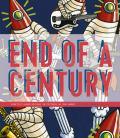
My name was on the cover of another book, too. Less mass-market, it’s an art book, End Of A Century, another beautifully designed and illustrated tome, which I was delighted to be asked to edit: a tribute to the amazing artwork of my late friend John Wrake, better known as Run, who died in October 2012. To research the book with his wife Lisa, who designed it and provided footnotes from his original notebooks and diaries, was a labour of love, and allowed us to spend two days in the NME’s archive in November 2014 (all the illustrations in the book are for the NME’s lead album review – I reprint one below). It’s a hefty chap, but something I’m proud to put my name to. You can order it and sample some more of Run’s work here.

Not as bookish a year as it might have been, but full of words and pictures.


December 2, 2015
Net migration

Before I recycle this October 26 edition of the New Yorker by passing it on to my friend Lucy, I want to direct you to what is a typically very looooooong article detailing the journey of a young Syrian law student called Ghaith from his home town of Jdeidet Artouz, southwest of Damascus, to Sweden, where he now lives. (It’s available to read for free, in full, here.) I was struck, as I always am, by the sheer guts, determination and self-belief that takes a citizen from one side of the world to another, by land and sea. But then I have never fled from war, as I have never been in one. I have never fled from anywhere, except a dodgy early-80s houseparty in Northampton when the front door was being kicked in (a few of us actually escaped via the rooftops and ended up in an old lady’s back garden – she let us go through her house to the street outside and didn’t call the police). I won’t detail Ghaith’s entire, titanic journey – although X-Factor contestants should check their use of the term “journey” after reading about this actual one – as that’s not the point of what I’m writing about.
What fascinated me was the vital role played in one man’s escape from Syria by technology. It’s easy to bemoan the many insidious and disturbing effects of smartphones and the internet on modern society. The fact that nobody looks where they’re going any more, for instance, something that winds me up every time I make my way through a busy station concourse with my eyes straight ahead. I am reading a book called The Internet Is Not The Answer by Andrew Keen, a former webvangelist who has turned against his master (“Rather than fostering a renaissance,” he writes of the internet, “it has created a selfie-centred culture of voyeurism and narcissism”). He is not the first see the online dream’s wanton destruction of middle class jobs (for which read: jobs) and the way its capacity for generating vast profits for a very slim section of society is crushing those at the bottom while a select few “young white men in black limousines” count their millions based on either having had one idea, or buying someone else’s idea and then selling it, but he sets it out well in a book. I tend towards his neo-Luddite position in my weaker moments of panic. But then I read Ten Borders: One refugee’s epic escape from Syria by Nicholas Schmidle.
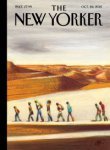
When we join the story, Ghaith’s older brother Ghalib has already fled Syria (initially, and with no choice, leaving behind his wife and three children, as is all too often the case). He did it by hiding in a crate in a truck and has settled in Gothenburg. Ghaith, also married, got a message from his brother via Facebook in May 2014, and this is where the tech journey begins. (By the way, if you ever hear some Daily Mail colonel complaining that the refugees can’t be that wretched, they seem to have enough money for mobile phones, punch them.) The Facebook message advised Ghaith to head to a Lebanese town to secure a fake passport from a smuggler. This didn’t work and he ended up in a detention centre. But he was not deterred. It is here that writer Nicholas Schmidle states, “The impact of social media on the Syrian refugee crisis has been profound.”
He refers to a 2012 paper by Rianne Dekker and Godfried Engbersen, professors at Erasmus University in Rotterdam, which states that social media has not only helped in “lowering the threshold for migration,” by allowing people to remain connected with faraway family members; it has also democratised the process, by facilitating “a form of silent resistance against restrictive immigration regimes.” It’s worth remembering this when we decide that Twitter is a force if not for evil, certainly for cheap distraction and exponential outrage at nothing.
We learn about the Asylum and Immigration Without Smugglers online community, which was created in June, 2013, by a 31-year-old Syrian known as Abu Amar. He became “an essential guide” for those wishing to escape Syria and re-settle in Europe. At its peak, the Asylum and Immigration Without Smugglers group had more than 60,000 members. Someone from the International Organization for Migration told Schmidle that when Syrians arrive in Italy or Greece “they just melt away at the pier … they get on Facebook, and they know where to go.” I’m not on Facebook, and I’m sort of petulantly against it, as it’s run as a megalomaniac’s wet dream, but it’s clear that social networks can be used for more than social reasons.

Ghaith, like many others, found details of escape through the Facebook group, a “discounted trip on a boat bound for Italy, run by a smuggler,” that departed from Turkey’s southern coast and went via Cyprus. Ghaith “followed instructions from the Facebook post”. For all the physical and corporeal details of his arduous journey, he might simply have never made the trip without online access. Money was exchanged electronically, using codes, naturally.
Boats, docks, life jackets, trucks, offices, shared hotel rooms, skiffs, coast guards: the building blocks of Ghaith’s escape story are solid. But the connecting threads are often ethereal, crackling electronic synapses, passing information, maintaining human contact. No telecommunications giant would dare to use the flight of a refugee to advertise its product, and yet, the flimsy premise of “interconnectedness” used to sell us only marginally improved models of a smartphone can be the difference between life and death. (If Benneton made a phone, they’d have a photo of a group of refugees huddled round a recharging generator on a Greek beach on the next billboard.)
As Ghaith’s journey continues, his sister wires him $1,000 from Saudi Arabia, to help pay for a $4,000 boat ticket, he and his friend Jamil keep in touch “through the mobile messaging service WhatsApp”, the article even reproduces chat-room communications sent between Ghaith and his smuggler (“Is there anything today?”, “Inshallah”). After a perilously overcrowded, aborted trawler trip from Turkey to the coast of Italy, we learn the terrible news: “His phone had been soaked, so he borrowed one to call his wife. Normally, they texted throughout the day, but they had been out of contact for more than seventy-two hours.” (Can you imagine the despair of not being able to use your mobile in such grim circumstances? Puts the Three Mobile network’s failure to give me a signal in the Clapham Junction area into perspective.) During a protracted layover in Turkey, Ghaith “busied himself each day by using an app, Fabulo, to study Swedish.” Again.
En route to the next possible boat out, this time to Cyprus, the go-between Turkish smuggler points to the horizon: “See those lights? Go toward them.” He then directs everyone to “switch off their phones,” as the coast guard picks up transmission signals. This exodus would not be possible without Samsung. On arrival – finally – at Lesbos, Ghaith calls his wife (his mobile has dried out) and she bursts into tears.
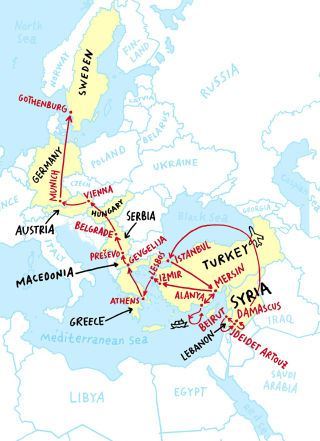
This passage has nothing to do with tech, but it moved me all the same. When Ghaith reaches the immigration center at Lesbos, after many instances of kindness from the strapped Greek locals, it is closed, “so he went to a former swimming facility next door, which had been converted into a shelter. He slept on the tiled floor, using his backpack as a pillow. ‘That was the best feeling in the world,’ he said. ‘For the first time in years, I knew that I could sleep without waking up with sweats, from fear. No bombs could fall on my head, no one would try to take me.’ He went on, ‘In Europe, it’s better to sleep for two hours than it is to sleep for 50 hours in Syria. Because, in Syria, in each one of those hours you’ll have hundreds of nightmares.'”
On the journey from Greece to Sweden, we get this vivid image: “Ghaith and his friends bought sleeping bags, then travelled to Thessaloniki by bus. At a coffee shop near the city’s train station, they charged their phones while Ghaith waited for Ghalib to wire him €1,500, through Western Union.” On a northbound train to Belgrade, Ghaith and pals hide in a bathroom for fear of being thrown off: “After Ghaith took a group selfie, they switched off their phones and locked the door.” I know, maybe the selfie wasn’t vital to their survival, but it may well have distracted them from detention or death.
The cards they played on the train were real. So were the metal police batons used to beat them in Macedonia. The viral, online world exists as an echo of the real one, a parallel universe. I’m using it now to type on a moving train and save my words to a cloud (and to refer to the text of the article on the New Yorker website for accuracy). Part of me does truly believe that the world was a safer and simpler place before the existentially blameless Tim Berners-Lee sent his first email. I grew up arranging to meet people at a certain time in a certain place and then hoping they’d turn up, with no way on earth of contacting them once they had left the house. We survived. Somehow.
And Ghaith survived the long haul to Gothenberg. The thankless Abu Amar continues to run what has become “a hotline for refugees”; he is “up late every night, guiding Syrians across borders and sending them annotated maps.” His Facebook group continues dispensing advice: “The sea today and tomorrow is fatally dangerous. Don’t underestimate the situation. We have enough victims.” … “The storm is practically over. The best island to leave for today is Mytilene.” He couldn’t provide this lifeline using a loudhailer. (He, too, got out, and lives in Hamburg.)

I liked this section, when Ghaith finds himself stuck in Athens. “In a text message, Ghaith explained his dilemma to Abu Amar, who sent a map directing him and his companions to a nearby hill. They could easily skirt Gevgelija, Abu Amar said, without drawing attention from the authorities. The refugees climbed to the top of the hill, ducked in the bushes, ate from a blackberry patch, and rested until nightfall.” There’s something pleasing about the idea of a blackberry being eaten rather than used to send a text message.
Heading for the Serbian border, Ghaith tries to “preserve his phone’s battery life, in case he needed to use G.P.S.,” surely the defining tribulation for the modern migrant. On, through Hungary, into Austria, and Germany, where Ghaith sent his brother Ghalib “a dropped pin on Viber, the messaging app” (whatever that is), confirming that he was indeed in the country. After all this messaging and pinning and chat-rooming and recharging and life-preserving across ten borders, Ghaith landed in Sweden, where an immigration officer “recorded his fingerprints, ran the data through an E.U. database, and confirmed that he had not previously been processed in Europe. ‘You are now under the custody of Sweden,’ she told him. ‘Sweden will take care of you.'” A happy ending.
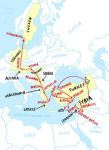
Long, complex, discursive and at times unbearably arduous, I still recommend this New Yorker article. (Boom, boom!) We are living in times as yet unrehearsed, not even in the 30s and 40s. The migration from Middle East to Western Europe defines us, whichever side of the barbed wire fence we sit on. And it seems that if mobile, wireless communications are the scourge of so much of our modern life, leading us to walk blindly through station concourses as we travel freely about the place, they can also truly act as a device for escape, safety, freedom and life.
Now, let’s bomb a few more Syrians out of there. No charge.


November 30, 2015
What if … the mechanical shark had worked in Jaws?
Another little item I wrote for Word magazine, in 2009, that I’d forgotten about (and has never been published online). I was asked to imagine a “what if?” scenario from the world of entertainment.

May, 1974, Martha’s Vineyard, Massachusetts: first day of the Jaws shoot. The three life-size, $200,000 mechanical great white sharks designed by effects veteran Robert A Mattey work like a dream. The saltwater has no adverse effect on the steel rails running under the surface, the eyes and jaws look realistic and the polyurethane skin does not need constantly replacing. The rushes looks fantastic. The film comes in on time and on budget. Director Steven Spielberg and editor Verna Fields do not need to “hide” the shark: it appears, full face, in scene one, requiring no suspenseful two-note musical theme from John Williams. Jaws opens in 409 theatres in June; audiences get an initial shock on seeing the shark, but the film peaks too early. Word gets out. Box office tails off. The big studios see no quick way of making a mint in summer, and continue to indulge the left-field “movie brat” directors. Universal files for bankruptcy. A nervous Fox opens Star Wars in just 300 theatres. It becomes a minor cult. No sequel is ordered. The studios doggedly pursue the European visions of the new wave of auteurs throughout the 80s until moviemaking becomes a high-risk, low-return business and the new multiplexes are closed, leading to a minor boom in arthouses. Jaws enjoys a revival as an ironic midnight movie. In 1993, Spielberg finally gets an Emmy for Watch The Skies, a single-camera sitcom about a man in Phoenix convinced he’s seen a UFO. People who have been swimming in the sea without fear ever since have no way of describing rare shark sightings: “It was a like a scene out of … ?”


November 25, 2015
Whatever | August 2010
Whatever | Guilty pleasures
They’re songs and books. What’s to feel guilty about?
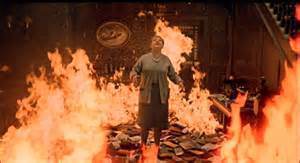
In May 1933, when the Nationalsozialistischer Deutscher Studentenbund decided to collectively haul themselves out of bed before the Third Reich equivalent of Loose Women and organise a nationwide purge of “un-German” literature at universities across Germany, more than 25,000 titles were burned on bonfires which must have smelt powerfully musty. Around that time and under that particular regime in that particular swathe of Europe, if you chose to leaf through a play by Bertolt Brecht in the park, or a novel by Thomas Mann on the tram, or Erich Maria Remarque’s All Quiet On The Western Front just about anywhere, you were by definition experiencing the illicit thrill of a guilty pleasure.
Similarly, your enjoyment in the old Soviet Union of The Gulag Archipelago, Doctor Zhivago or Nineteen Eighty-Four would have been laced with that bracing buzz of the forbidden, as each might have earned you the bracing buzz of a KGB show trial. In 2008, South Korea’s Ministry of Defence banned the military from reading an armful of “seditious” books, including that well-thumbed squaddies’ standby Bad Samaritans: The Myth of Free Trade and The Secret History of Capitalism by Cambridge professor Ha-Joon Chang.
Even today, owning a copy of Dianetics by L Ron Hubbard in the new Russia carries a 3,000 rouble fine and a jail term of up to 15 days. (Most of the arch-Thetan’s canon was banned under a recent law, for “undermining the traditional spiritual values of the citizens of the Russian Federation.”) It remains illegal to read The Diary Of Anne Frank, Sophie’s Choice and Schindler’s List in Lebanon, all de-listed by the Sûreté General for portraying Jews, Israel or Zionism “favourably”. And The Da Vinci Code is conspicuous by its absence on the streets of Beirut, too, thanks to lobbying by Lebanon’s Catholic Information Center, who officially have nothing better to do.
Bear all of this in mind when you consider that in May 2010, the Guardian newspaper asked various browsers on a knoll at the Hay Literary Festival to reveal their “literary guilty pleasure”. Their willing responses included Marian Keyes, David Nicholls, Zadie Smith, Alan Bennett, “heavy metal biographies”, and The Kite Runner.

Why should anyone literate enough to attend a Guardian-sponsored book fair in a country that even Mark Thomas would be hard pushed to call a totalitarian state, feel guilty about reading Zadie Smith, or Marian Keyes, or a heavy metal biography? These answers, like the spurious questionnaire standby itself, may be lightly thrown but they reveal weightier truths about our national neurosis: we are rendered daft by keeping up appearances like a bunch of insecure teenagers. Though we have little to fear from secret police or religious junta, we merrily and self-mockingly go along with the flimsy pretext that some books, films and TV shows can be consumed without guilt, while others must be enjoyed behind locked doors. Such as, apparently, the Celebrity Come Dine With Me of literature, Khaled Hosseini’s The Kite Runner. Hey, people might think you’re reading a book about kites, rather than the rise of the Taliban in the power vacuum after the Soviet invasion of Afghanistan. Incidentally, the popular film was banned in Afghanistan, making the DVD a cinematic guilty pleasure in Kabul.
In 2007, commissioned by the Costa Book Awards, a YouGov poll declared Stephen King “the UK’s favourite literary guilty pleasure.” UK readers also “freely admitted” to feeling a bit self-conscious about whipping out a Rowling, a Grisham or a Pratchett without first slipping it between the covers of a decoy copy of Fiesta or Knave. Expert comment on the coffee chain’s press release came from a contributing editor of The Encyclopedia of Guilty Pleasures: 1001 Things You Hate To Love, published in hardback in 2006 and described by the Times Literary Supplement as “something of a guilty pleasure.” Its very opportunistic existence flagged up the phrase’s sudden marketability.
That this sado-masochistic concept should still linger in the popular imagination and across so many artforms is, I’m afraid, rock music’s fault, where lines are forever being drawn and redrawn in the dunes of credibility. It was enterprising London DJ Sean Rowley who first trademarked Guilty Pleasures™, which now covers an entire cheeky empire of club nights, compilation albums, SingStar tie-ins, a Fearne Cotton-fronted ITV1 karaoke show, and a mobile disco available for hire at festival tent, arena warm-up, corporate jolly and private function. Rowley was astute in locating the fecund no-man’s land between cool and uncool a few years back and bagging the salvage rights.

I don’t wish to poop the party: the pics on the Guilty Pleasures website suggest a sizable slice of ongoing camp, works-outing fun in nightclubs up and down the land – verily, it is the new School Disco. But in taking the notion so irretrievably overground, gurning wig-outs of allegiance to ELO or Journey or Japanese Boy obviate any need for guilt. We live in a world of pop pluralism and Glee glasnost, where nostalgia packages and tribute bands make everything alright and, for anyone over 30, the last vestiges of embarrassment have been cast aside like a pair of crutches at Lourdes. Now is not the time to transfer our guilt to books.
Among the Guilty Pleasures website’s “celebrity confessionals”, Russell Brand cleverly eschews the obligatory Toto or Wham and plumps for Gary Glitter. “I feel a bit guilty about this,” he declares. “What with him being a convicted paedophile.”
In the same spirit of literalism, three cheers too for Alex, 70, retired, from mid-Wales, the sole Guardian respondent at Hay to break ranks and say, “I don’t feel guilty about reading anything.” Nor should you. Now, where’s my copy of Mein Kampf? I need something to wrap around The Encyclopedia of Guilty Pleasures on the bus.


November 2, 2015
There at the New Yorker
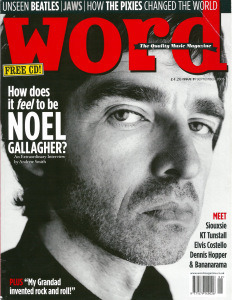
Thanks to an enterprising gentleman/scholar called Gavin Hogg, and his ongoing blog project to log all issues of the much-missed Word magazine, I have just re-read my autumn 2005 article on the New Yorker, which is my favourite current magazine and I suspect always will be. I don’t get commissioned to write “long-form” articles that much. The occasional meatier piece for Radio Times (I’m working on a Star Wars story right now, and I’m going on the set of Peaky Blinders this week), and the even more occasional feature for the Guardian or G2 (although the newspaper’s filo-pastry-like commissioning process is sometimes as impenetrably layered as the BBC’s!), but I mostly, these days, I seem to talking again – on the radio, on the Guardian website, on further talking head shows – and my writing work is all beneath the surface, in script form, in development. So, it was an education to re-read what turned out to be an educated three-page feature in its original – and rather fetching layout. I reprint it here, as – what the heck! – I’m rather proud of it. It was from the heart, and decently researched, and comes from a place of genuine love, which is always a good place to start. I wish Word magazine still existed, but remain truly thankful that it ever did.





October 1, 2015
GoggleZelig
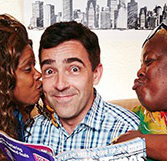
I thought it time to publish my entire, exclusive, self-taken portfolio of Gogglebox portraits, which I collected on my Grand Tour, this spring, while writing Gogglebook: The Wit & Wisdom Of Gogglebox (Macmillan, £16.99 hardback, but cheaper if you order via Hive and support your local bookshop here). They are not, technically, selfies, but I took them myself, using what used to be known as a camera, and its “self timer” feature. I tried to stand my camera as close as possible to where the camera usually is when Gogglebox is being filmed. (Insight: at the Malones’ house in Manchester, I was invited to stand it on the box containing their dog Joe’s ashes – “Joe won’t mind,” Julie assured me.)
And then I inserted myself, Zelig style, into the frame. The results are mixed, artistically, but all record a unique, near-religious pilgrimage, which began at the Tappers’ in North London on April 26, and ended at the Michaels’ in Brighton on May 26. That represents a packed month of my life, and one I shall never forget. I calculated that I covered 1,942 miles as I zig-zagged from Nottinghamshire to Merseyside to Yorkshire to Derbyshire to Lancashire to Wiltshire to Greater London again and Sussex. It was achieved in a number of legs and took military planning. Not a single household let me down. (Except Steph and Dom, whose guest house I was unable to visit, due to their extra-curricular schedule.)
I hope you like the book. You have to be a Gogglebox fan to fully appreciate it, but if you are, there are delights both nostalgic and new within its covers, and the illustrations by Quinton Winter are phenomenal.
Here are the portraits, presented in the order in which they were taken.













What a rare and lovely month it was. I shall never forget it.
The little pic of me surrounded by Sandy and Sandra was taken by professional photographer Nicky Johnston for Radio Times.


Andrew Collins's Blog
- Andrew Collins's profile
- 8 followers



